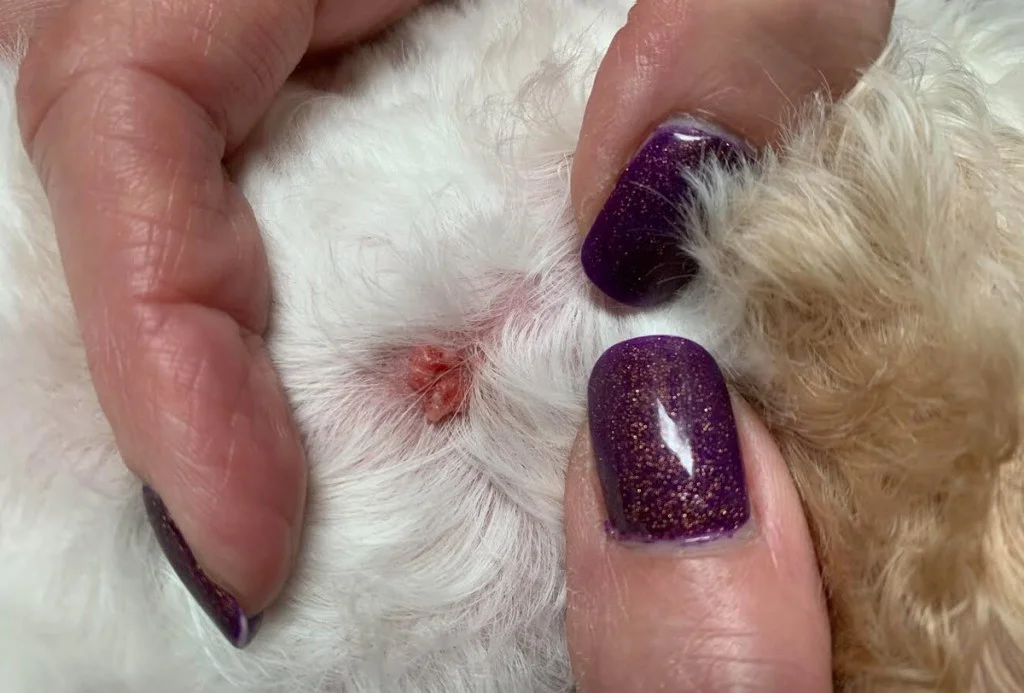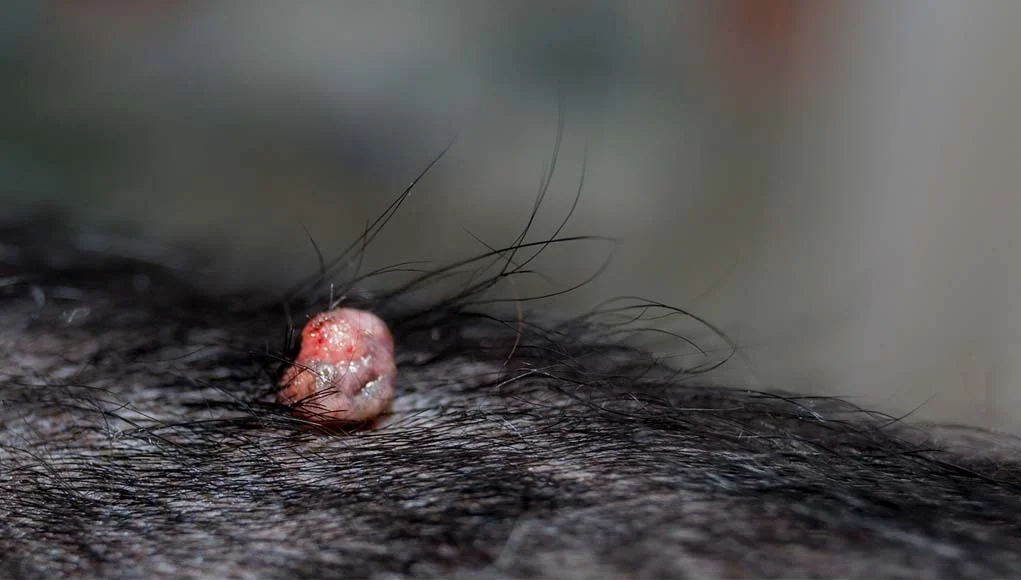Dog Warts are a common problem in dogs (humans too!). Warts can occur in most areas of the body and show up most commonly on the toes, face, lips, nose, ear flaps, abdomen, elbows, underarms, and hind legs.
Warts are caused by viruses.
There are hundreds of viruses that each cause a slightly different formation of warts in different areas of the body. Warts are very common in dogs and the happy thing is that they are not serious or problematic.
What are Dog Warts?
Dog warts are benign tumors of the skin caused by viral infections. They are extremely common in dogs and can occur anywhere on the body.
Also Read: My Dog has Green Stuff Coming Out of His Weiner
Dog warts are usually caused by the same viruses that cause human warts; specifically, the types of human warts that can be passed from one person to another:
Dog Warts Pictures


How do dogs get warts?
The wart virus is found in the saliva and is transferred to another dog when they come in contact with an infected dog.
Some breeds, such as the Boxer and the Large Munster lander, have a higher incidence of warts than others. Usually, if a dog has warts they will have only a small number at a time, but sometimes they may have many more. They can vary in size from being smaller than a pinhead to being as big as a golf ball.
Are dog warts contagious?
Dog warts are caused by a papillomavirus infection. Dogs with warts are contagious to other dogs, but not to other animals or individuals.
Dog warts on Mouth
Several types of canine papillomavirus have been identified and each type causes a specific form of the disease (e.g., warts on and around the mouth and warts affecting the feet). Once a dog is infected with one type of papillomavirus, he or she becomes immune to that type but not to others.
What do warts look like?
A typical dog wart looks like a small cauliflower head. It has a stalk that leads to a rough texture growth. Sometimes the lesions are hard scaly plaques; Others may be a growing mass of hard-working insiders. They are usually found on the dog’s face, but not on the neck, feet, or anywhere on the body.
Are Viral Papillomas Dangerous?
No, usually canine warts recede and resolve without the need for treatment. This is because the dog’s immune system responds to the virus. warts usually begin to subside and begin to subside within three months.
What treatment does my dog need for warts?
The first step if you find new growths on your dog is to book an appointment with your veterinarian. Your veterinarian may suspect wart growth due to its wart; However, if it looks suspicious, your veterinarian may advise testing to check if it is any growth. This may involve your veterinarian taking a small sample using a needle and sending it to the lab or surgical removal and examination.
If the growth is a suspicious wart, it may be necessary to monitor for a while to check if it is regressing. Note the wart and closely examine any problems or changes. It is a good idea to consult your veterinarian if the wart is growing or looks significantly different.
Are dog warts problematic or painful?
Dog Warts can have serious psychological consequences, especially for adolescents. However, if they occur in large numbers, they can sometimes be problematic when they occur in small dogs (e.g. in the mouth). In the case of a dog with a large number of warts in the mouth or other areas of the body that may need treatment.
Treatment may include antiviral drugs; However, medication is usually used only in severe cases of oral papillomas.
The most typical case is a dog with a single or very small number of warts. Occasionally there may be bleeding or infection in warts, in which case treatment may be needed to fix it.
If a wart is constantly bleeding, your vet may advise removing it. Acne on the whole does not bother your dog or cause pain. If it rarely occurs in an easily accessible area such as a leg the dog may press or bite in that area. It is important to discourage this to prevent problems such as irritation and infection.
How to prevent Dog warts?
There is no reliable way to make sure your dog does not come in contact with papillomavirus. These viruses are very common and can live long outside the dog in the environment so it is virtually impossible to prevent infection.
If the dog has a large number of warts (such as a large number of oral papillomas) it is best to limit close contact with other dogs until the warts return. However, usually given warts are not severe and in most cases resolve without the need for treatment.
How to get rid of dog warts at home?
There are two popular home remedies to use in response to dog warts. The first is vitamin E. The second is to use a homeopathic remedy called Thuja. It is important for a veterinarian to diagnose papilloma to make sure it is not a tumor or another type of problem.
Vitamin E for dog warts
- Puncture the vitamin E capsule
- Apply the capsule contents directly to the warts
- Apply twice a day for two to three weeks until the papilloma is cured
Thuja for dog warts
Does Thuja work for dog warts? the simple answer is, Yes, at certain concentrations, Thuja occidentalis has demonstrated its ability to safely eradicate dog warts.
- Give six to ten capsules daily, by mouth and 20 minutes before meals
- Should be put directly in the mouth, not the throat (so it can absorb my mucous membranes)
- Repeat the process daily for 1 week.
Give this medication as advised by your veterinarian.

